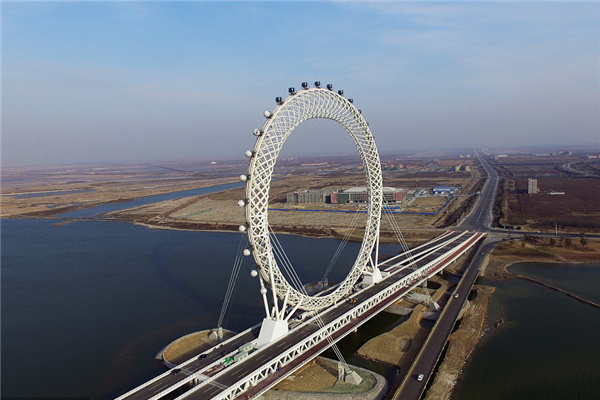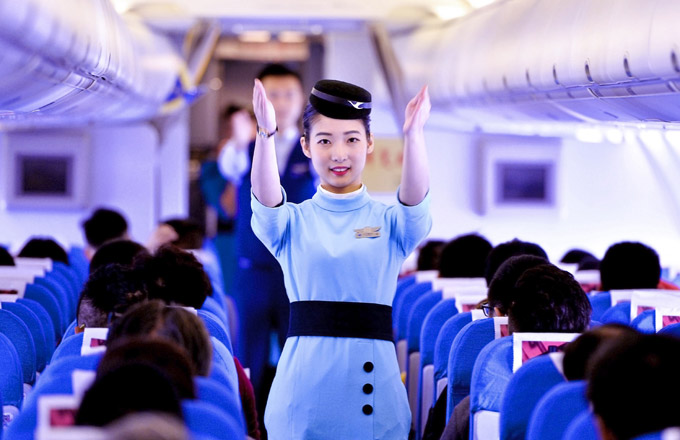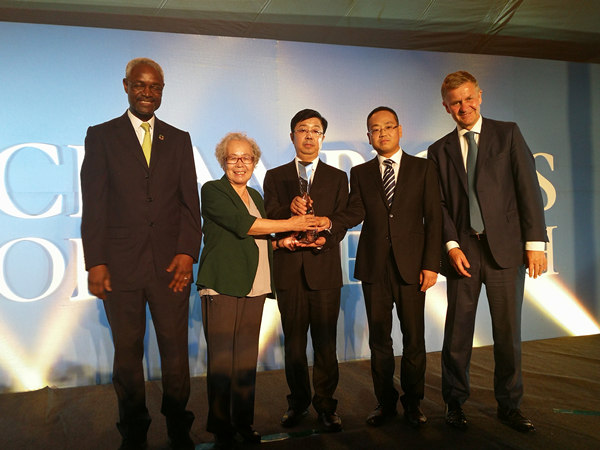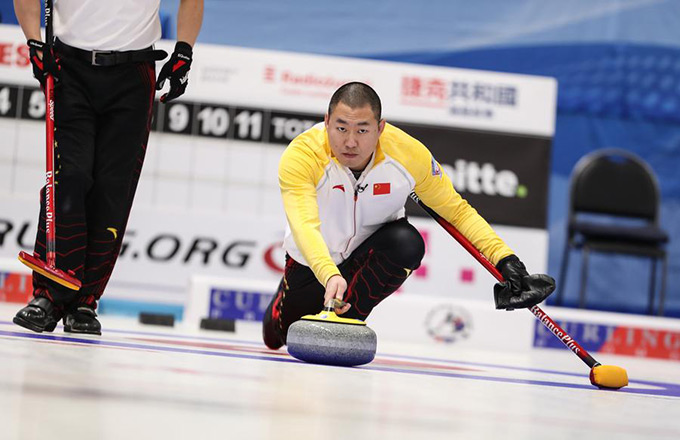

|
Jiang Zemin (center), then the deputy minister of electronics and industry, raises a toast with Li Deguang (left), the first chairman of HP China Co Ltd, at the signing ceremony of a memorandum of understanding to form the first Sino-US hi-tech joint venture on July 27, 1983. |
On February 21, 1972, when Richard Nixon stepped out of Air Force One to shake hands with Chinese premier Zhou Enlai, the historical moment was witnessed by millions in the United States thanks to the live TV broadcasting.
Yet for Chinese engineers, what impressed them most were the Hewlett-Packard computers used for the satellite communications.
That was why the Chinese government immediately invited HP to send executives to Beijing to explore cooperation opportunities.
But negotiations initially proved fruitless as most of the hi-tech gear China wanted to buy from HP was on a list of export goods banned by the US government when the Cold War still prevailed despite the thawing Sino-US relations.
However, it became a prelude to forming China's first hi-tech joint venture as well as HP's opportunity to begin riding on China's economic boom.
On January 1, 1979, China and the United States formally established diplomatic relations and when Deng Xiaoping met Henry Kissinger, the chief architect of China's economic reform eagerly asked Kissinger to recommend some US companies with which China could work to jumpstart the country's hi-tech sector.
Kissinger suggested HP and its co-founder David Packard visited Beijing in August and proposed a joint venture.
In fact, the US technology giant was already making preparations. Early in June 1979, HP's chief operating officer Dean Morton already was urging Liu Jining, a Chinese engineer working at HP, to return to China to start up HP's China business. Underlining HP executives' ambitious vision, Morton told Liu that "China is the world's only uncultivated market which promises unprecedented career opportunity", recalls Liu, who at the time was a bit reluctant to lead the mission.
Packard's visit proved a boon. During the discussions with Chinese State leaders and senior officials, he "highlighted the importance of the market as a driving force," says Liu.
And "(Packard) said China's planned economy resulted in manufacturing products that were not needed by the market while there was a great inadequacy in manufacturing what the market really needed".
Packard told Chinese leaders that a market-oriented mechanism was necessary and that principle later became the cornerstone of HP's China business that integrates manufacturing, marketing and sales.
"I believe that had some impact on Jiang Zemin's annoucement to set building the socialist market economy as the goal of China's economic reform (in the 14th National Congress of Communist Party of China) in 1992' (which marked a departure from long years of planned economy)," Liu says. In fact, as the deputy minister of the electronics and industry, and the vice-chairman of China National Electronics Import and Export Corporation (CEIEC), signed a Memorandum of Understanding for forming HP's China joint venture during a visit to HP's headquarters in California and David Packard's home in June 1983.
Three months later, all of HP's board members flew to Beijing to hold its board meeting. That was a first for a US company although nowadays an increasing number of multinationals are doing so to highlight the importance of the China market.
In 1985, HP's joint venture was formally launched with the US company holding a 57.5 percent stake and CEIEC 27.5 percent. Two other Chinese companies took the remaining stake.
Liu became the first president of HP's China business, which was called China Hewlett-Packard Co Ltd. The Chinese government granted the privilege to underline its eagerness to introduce advanced technologies from the United States. So far no other multinationals are allowed to use China as the first word in the name of their Chinese operations.
Riding on China boom
HP's early entry into China as one of the world's biggest technology companies, gave a much-needed boost to China's economy as well as its drive to introduce foreign advanced technologies to revamp domestic industries.
The Commission of Science Technology and Industry for National Defense (COSTIND) oversaw the country's hi-tech industry for a long time. In 1980s, COSTIND was the primary Chinese government body HP had to deal with, although these days much of its function has been transferred to the Ministry of Information Industry, Ministry of Science and Technology as well as the National Development and Reform Commission.
In 1981 HP won an order from the United Nations Development Program (UNDP) to provide China with five HP 3000 minicomputers. The US firm in fact developed the HP 3000 series in 1972 and released the products in 1973. However when they arrived in China even 8 years later, it was still a big event in the country that was in dire need of advanced technologies.
Underlining the importance for China, when the HP 3000 minicomputers were delivered to the airport in Beijing in 1981, authorities closed a street in the neighborhood just to unload the computers. The Ministry of Foreign Trade and Economic Cooperation, which was the predecessor of the Ministry of Commerce, became the first user of HP computer products in China.
From 1985 to 1989, the first five years since the launch of China HP Co Ltd, sales growth was sluggish. It hit $40 million in 1989, up only from $32 million in 1985. But the number of employees surged from 149 to 370 and it established two branches and four liaison offices, boding well for the firm that was ready to flex its muscles.
With China reforming its State-owned enterprises and multinationals swarming to the country, information technology spending in the country started to see a boom. And HP, which established a relationship with China much earlier than most of its peers, was quicker to capitalize on it.
In 1990 China HP netted annual revenue of $74 million and increased it more than five fold to $372 million in 1995. In 1999 the figure exceeded $1 billion, making China HP the first joint venture in the country to see its yearly revenue hitting the billion US dollar benchmark.
Growing with China
After 2000 when Cheng-Yaw Sun became president of China HP, the firm took some unique approaches to expand its business as well as China's IT market. It launched the China HP Business School in 2001, which trained a lot of top-notch executives in the country. In 2002 it set up an IT management school as well as a software engineering institute in 2003. Inside China HP there is also a leadership development center with Sun as one of the lecturers.
"Only HP had so many training institutions. And for a time nearly half of heads of top IT companies in China were trained at HP," says Sun. "Also chiefs of many channel partners were influenced by HP's culture."
The policy enabled many Chinese companies to learn Western management practices, which boosted the domestic market although many eventually became HP's rivals such as Legend, now known as Lenovo, China's top PC maker.
Lenovo started its business by distributing IBM and HP's products in the 1980s. In fact, China HP's employee badge inspired the first one designed for Legend. "Yang Yuanqing learned all of the sales tactics from HP during 1994 and 1996 and after that he started to create his own pitches," Lin Yang, former vice-president of Digital China, was quoted by the China Computer World as saying.
Yang, who was a sales guru at Legend at that time, is now the helmsman of Lenovo that has already acquired IBM's PC-making business. And Digital China is a spin-off from Legend.
Although HP's training programs spawned many rivals which are posing a challenge to the US giant, Sun, who retired last year, believes that the move to China eventually benefited HP as the size of the whole market has expanded with the intensified competition.
Now the firm is ready to expand its market again by plugging into smaller cities and the rural market.
"In the first half of this year, China HP plans to penetrate into China's 600 fourth- and sixth-tier cities. That includes not only PCs, but also other products such as servers," says Foo Piau Phang, president of China HP.
(China Daily 05/12/2008 page6)













